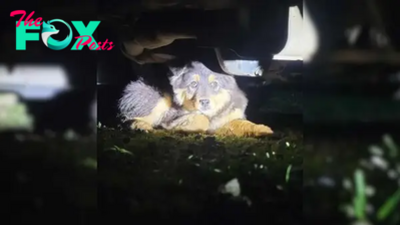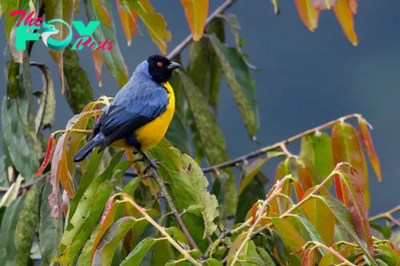Pet
QL Unveiling the Understated Charm of an Avian Wonder: A Delicate Aura with Remarkable Attributes!
The remarkable feature of this bird is its forehead that shines in shades of blue and green. It also has a long blue line from its throat to the breast and a subtle yellow belly with green streaks.

Introducing the Blue-bearded Bee-eater:

The Blue-bearded bee-eater, also known as Nyctyornis athertoni, is a bird species with unique features. It has long chin feathers that can be fluffed up to resemble a beard, and it is the largest bee-eater in its family, measuring 31-35 cm in length and weighing 70-93 grams. Its bill is sickle-shaped, and its tail is square-ended without wires. The bird has grass-green plumage with a turquoise forehead, face, and chin, and its elongated throat feathers create a bearded effect when fluffed. Its belly is yellowish to olive with streaks of green or blue.

It is important to note that male and female blue-bearded bee-eaters have a similar appearance, but the male’s blue throat feathers have a higher ultraviolet reflectivity compared to the female. The bird species was given the name in honor of Lieutenant John Atherton who belonged to the 13th Light Dragoons and passed away in 1827. Mrs. P. J. Selby, Lieutenant Atherton’s niece, acquired a specimen of this bird and together with Sir William Jardine, described the species in their publication “Illustrations of Ornithology” which was released in 1828.

Geographic Range and Environment The bee-eater is a unique type of bird that can be found inhabiting a variety of regions throughout the Indian subcontinent and some areas of Southeast Asia.

These stunning avians are usually found in forest clearings, predominantly in the Malayan region, with some extending westward into peninsular India. They thrive in various habitats, primarily at medium altitudes below 2000 meters, with their usual habitat consisting of forests ranging from thin to fairly dense, often with clearings. These birds are typically encountered individually or in small groups of up to three individuals and have a patchy distribution across their range. Detecting their presence in an area can be quite challenging.

The fascinating feature that sets them apart is their long blue feathers on their throats, which gives them their unique name. Although they are known for their loud calls, they tend to be less sociable and active in comparison to other smaller bee-eater species. Unlike many other bee-eaters, their tails have a square end and lack the distinct “wires” created by longer central tail feathers.

The behavior and ecology of blue-bearded bee-eaters are fascinating. These birds mainly feed on bees and have a unique way of dealing with giant honeybee colonies. They intentionally provoke the colonies, causing the guard bees to attack them, but then catch and consume the bees mid-air. Although they mostly forage using aerial sallies, they sometimes gather food from tree bark. Blue-bearded bee-eaters have also been observed associating with mixed-species foraging flocks and feeding near the flowers of Erythrina and Salmalia, but their exact dietary preferences in these situations are still unknown.

The bee-eaters are well-known for their loud calls, but they don’t make them very often. They are not as active as their smaller counterparts and their calls consist of a variety of sounds, such as cackling hornbill-like noises, dry “Kit-tik…Kit-tik” series, or hollow nasal “kyao” calls. When in pairs, they may engage in duets that include cackling and rattling sounds, ending with short purring notes. Their flight pattern is undulating and reminiscent of barbets.

The blue-bearded bee-eater breeds in India from February to August. During courtship, they engage in feeding rituals, bowing, and tail-fanning. The nesting process typically begins about a month before egg-laying, and these birds construct deep tunnels in mud banks where they lay four spherical, white eggs.

Take a moment to listen to the chirping of this bird:
-
Pet1h ago
th.On this day commemorating my birth, I keenly recognize my imperfections, yet not a single person has extended their greetings to me.
-
Pet1h ago
nht.Every morning, a small dog faithfully follows a police officer down the street, walking over 2 kilometers each day, hoping the officer will adopt him.
-

 Pet5h ago
Pet5h agoLamz.From Shelter to Sanctuary: A Mother Dog’s Journey from Solitude to Surging Love, Delivering 14 Adorable Puppies Amidst New Beginnings and Resilience
-

 Pet8h ago
Pet8h agoQT “Joyful Adoption: Rescued Shelter Dog Finds Happiness with a Loving Family, Breaking Records for Length of Stay”
-

 Pet11h ago
Pet11h agoLamz.From Weathered to Wondrous: A Rescued Pooch’s Journey Back to Playfulness and Charm
-

 Pet14h ago
Pet14h agoQT “Shining Examples: Homeless Dogs Line Up for Free Meals, Sparking Global Respect and Admiration”
-

 Pet14h ago
Pet14h ago2S.Glimpses of Innocence: Capturing Newborn Babies Saying Hello to the World in Unique Photos.2S
-

 Pet21h ago
Pet21h ago2S.Deep Sea Wonder: Diver Encounters Enormous 4,000-Pound White Fish, Stretching 80 Feet, Leaving Him Astounded!.2S

























